Once you’ve been approved for your first United States credit card (most likely an Amex card through Nova Credit or Global Transfer), it’s a bit of a waiting game to build up your credit history and credit score before applying to other issuers. While we recommend getting an Individual Tax Identification Number (ITIN) as early as possible, having one only serves to resolve your identity to the credit bureaus, but it doesn’t actually improve any aspect of your credit file or credit score.
US Credit Building Takes Time
Most of the experts recommend playing the Amex game in your first year while trying to stay well under the infamous Chase 5/24 rule. Then when you’ve got a year of history under your belt you might start applying for Chase cards.
While we generally think this is a solid strategy, I would caution the following: 1) don’t assume that anything under 2 years of history will be enough for Chase, and 2) don’t pass up on great opportunities just because you’re holding out for Chase.
For me, it took nearly two years of history built on two Amex cards, and a Citi Premier card before I was able to get a Chase Sapphire Preferred (and I was denied multiple times). And even after getting my first Chase card, getting a second card isn’t proving to be a walk in the park either. So all that waiting and preserving my 5/24 spots, and now most of them are opening up anyway with me approaching two years of history.
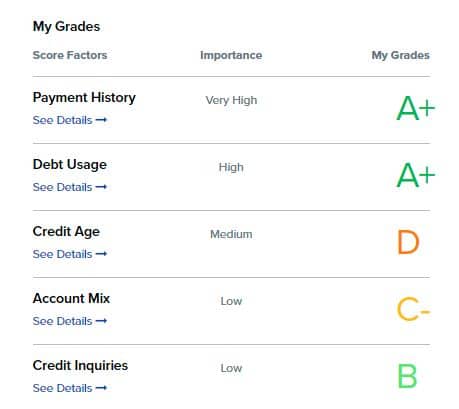
My point here is simply that it can be good to take a step back and approach your US credit card strategy a bit more holistically and with a long-term view in mind. Building a solid foundation should be the priority, not getting a specific card or welcome bonus. And that’s what we hope to help you with throughout this article.
We’re not going to debate over what specific cards you should apply for in your second year of US history, or how long to wait before applying for Chase. Instead, we will provide an overview of the basic steps you should take to monitor and improve your US credit score as quickly as possible. Additionally, we also have several ideas for new and somewhat experimental ways surrounding the fastest ways to build credit.
We do assume you already have an ITIN for a lot of the strategies mentioned, so if you haven’t done so already, consider using our in-house ITIN Service!
Getting Started: Establish Credit Monitoring
As you may know from our introduction to credit cards post, your credit score is determined by a variety of factors including payment history, debt usage, age of accounts, account mix, and credit inquiries (hard pulls).
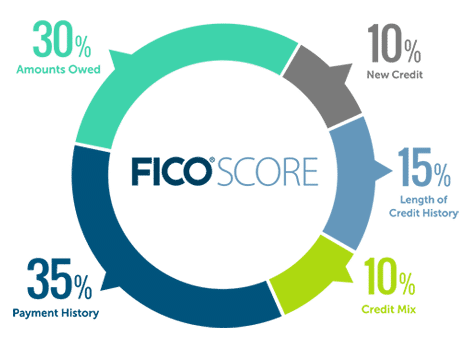
As opposed to Canada where there are two credit bureaus, the US has three: Experian, Equifax, and TransUnion, which provide three slightly different (but the same) scores. FICO on the other hand is just a proprietary scoring model which uses information from all of the three bureaus.
| FICO | Experian | Equifax | TransUnion | |
|---|---|---|---|---|
| Range | 300-900 | 300-850 | 280-850 | 300-850 |
| Breakdown Payment history Utilization Length of history Inquiries Credit mix | Percentage 35% 30% 15% 10% 10% | Percentage 35% 30% 15% 10% 10% | Percentage 35% 30% 5-7% 10-12% 15% | Ranking Payment history: 4 Utilization: 3 Age & Type Of Credit: 3 Total Balances & Debt: 2 Available Credit: 1 Inquiries: 1 |
| Full Credit Report | ❌ (score only) | ✅ | ✅ | ✅ |
After about 3-6 months, your reported card payments should establish a profile with the credit bureaus. It’s important to keep track of your credit score and history through credit monitoring services.
Credit Monitoring with FICO
We generally assume that any Canadians starting out in the US card game will get an Amex card as their first. Luckily, Amex offers a built-in way to access your FICO score.
Simply log in to your US American Express dashboard and visit this link.

Now, there exist multiple versions of the FICO score. This score is FICO 8 and although Amex claims to use it, you might see a different number if you went directly to FICO, and the number seen by other financial institutions that use FICO when evaluating your creditworthiness could be different as well (depending on the type of credit too). Something to keep in mind.
Note: It seems that in addition to Amex, Citibank provides its clients with an Equifax-based FICO score, and Bank of America provides clients with a TransUnion-based FICO score.
Credit Monitoring With Experian
In addition to monitoring your FICO score with Amex, I recommend signing up to credit.com, which is a service similar to CreditKarma and Borrowell in Canada. This will provide you with your Experian-based VantageScore 3.0.
You will also get access to a ‘Credit Report Card’, which is a mini version of a full credit report, showing your open accounts, debt, total credit limits, recent inquiries, addresses on file, and some other useful information.
To sign up, you will need to enter your ITIN in the SSN field, along with identifying information including your US address and birthdate. I would recommend using a VPN such as Windscribe to emulate a US IP.
Credit Monitoring With Equifax
MyEquifax is a free portal provided by Equifax. It provides you with an Equifax-based VantageScore 3.0 along with a full detailed credit report. You will need to use your ITIN to sign up. The credit report section is more comprehensive than what is provided by any of the other monitoring services.
Credit Monitoring With TransUnion
Unfortunately, I am not aware of any way to get your TransUnion scores for free without an SSN. Credit Karma will only accept SSN and does not recognize ITIN. If anyone is aware of anything else, please let us know in the comments!
What About Full Credit Reports?
Full credit reports are also hard to get without a valid SSN. Normally you can request one free once per year via annualcreditreport.com, but alas ITIN will not work. Experian will accept ITIN, but only if requested by mail. Use this form to request your credit report from Experian (entering ITIN in the SSN field). You will also need to provide a copy of piece of ID and proof of address such as bank statement, utility bill, etc. More information can be found on the Experian blog.
If you can get signed up for myEquifax, this will provide you with an online version of your full credit report, along with the VantageScore 3.0 based on Equifax data.
Standard Ways to Build US Credit History
On to the meat and potatoes: you now have your first US credit card with American Express, you’ve got an ITIN, and you’ve got access to your credit scores. What now? How do you start building your credit profile and unlock access to the other juicy issuers, namely Chase, Citi, CapitalOne, and maybe even Bank of America?
For Canadians without an SSN, there are limited ways to build credit history (aside from time). However, the most accessible means are the following:
- Apply for more credit cards
If you only have one card with Amex, I would definitely recommend trying for a second after 3-6 months. This will give you a higher credit score, which also doubles to decrease your utilization if you started off with a low limit. Find the best offers for US credit cards with our comparison tool.
- Apply for a higher credit limit on existing credit cards
If you already have a few credit cards with Amex, you can consider asking for a credit limit increase on some of those cards (but only every 6 months). I myself found this helped in finally getting approved with Chase, as Amex initially gave me a very low limit on my 1st and 2nd cards ($2,000-$3,000 if I recall). After a request, I was up to $13,000 and from there, things seemed to pick up for me with other issuers.
- Apply for secured credit cards
As a last resort, if you’re really having issues branching out, or just wanting to get an in at another issuer such as Citi or Capital One, you could consider applying for a secured card. I get mailers for these all the time with pre-approval. You deposit an initial amount (as low as $49 USD with a Capital One Platinum Secured card, and that becomes your credit limit. They work very much like prepaid cards.
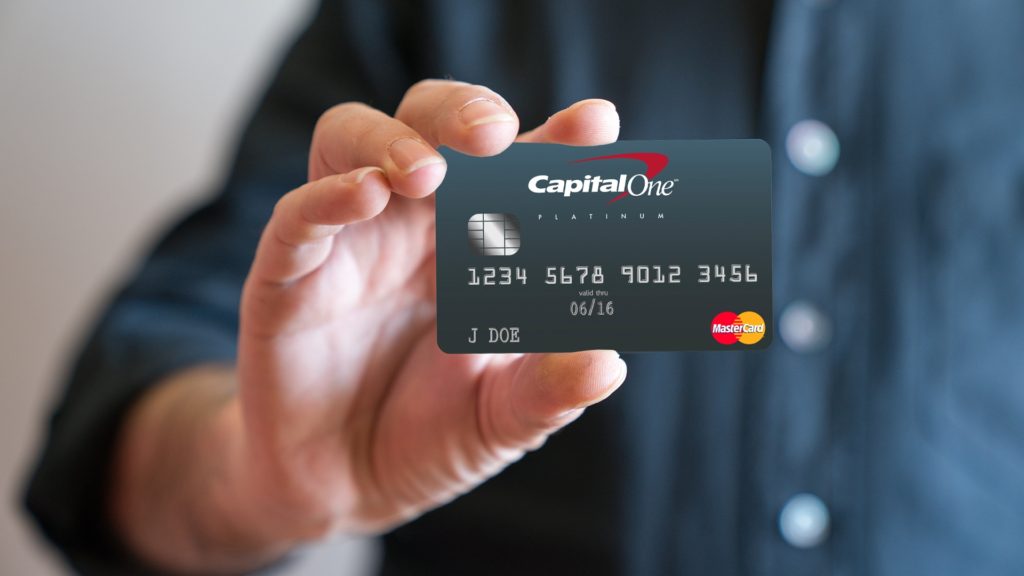
At the end of the day, there is only so much a credit card can do to improve your credit rating. It is only one type of credit/debt among many (mortgages, personal loans, utilities). In addition, you run into a bit of a chicken and egg problem – without a rich history, getting approved for new issuers outside of Amex is limited. But without new accounts from a variety of lenders it’s a slow process to improve your history. As you saw previously in this post, even after 2 years of history and cards at Amex, Chase, and Citi, my account mix is still rated a C-.
So in this next section, we’ve brainstormed (and done some first-hand testing) ways that you can expedite your credit-building process and build a richer history faster (ideally in your first year of US card membership).
(Experimental) How to Build US Credit History Faster
Disclaimer: we have not tested all of these first hand, but where we have first hand experience we have commented as much.
Buying Tradelines

A tradeline is simply an account that appears on your credit report. Your first US Amex card is a tradeline for example. So why and how would you “buy” a tradeline? Well in the US (unlike in Canada), authorized users on a credit card will have the primary card account show up on their credit report. What’s more, you will inherit the full history of the primary card.

So by having someone else with say a 10 year old credit card add you as a supplementary cardholder, you suddenly have 10 years of credit history in the eyes of the bureaus and issuers. Sounds too good to be true!
Possibly… the trick is to find a reliable tradeline provider. The leading tradeline provider we’re familiar with is Tradeline Supply. Their service is entirely online, and works as follows
- You browse available tradelines being sold on their dashboard
- Add a tradeline to the cart and go through the checkout process (this will include signing an agreement/conditions and filling out personal information).
- Tradeline Supply takes care of the rest and ensures that you are added to the tradeline by the seller.
You are only guaranteed to have the tradeline reporting to your credit profile for 2 reporting periods so keep this in mind when looking at prices.
Tradelines are a large topic that may warrant a future dedicated post. Frugal Flyer may even consider entering the tradeline reselling business down the road. For now, I would recommend reading the resources page of Tradeline Supply’s website, as it’s filled with high-quality information on tradelines, including the (potential) benefits and risks.
Some other Tradeline suppliers which we haven’t researched as thoroughly:
Note: Tradeline Supply currently requires an SSN, so will not work for ITIN holders 🙁
Credit Builder Fintechs
Extra
There are a number of fintech apps popping up aimed at helping customers improve their credit score. Extra is one that came on our radar quite recently.
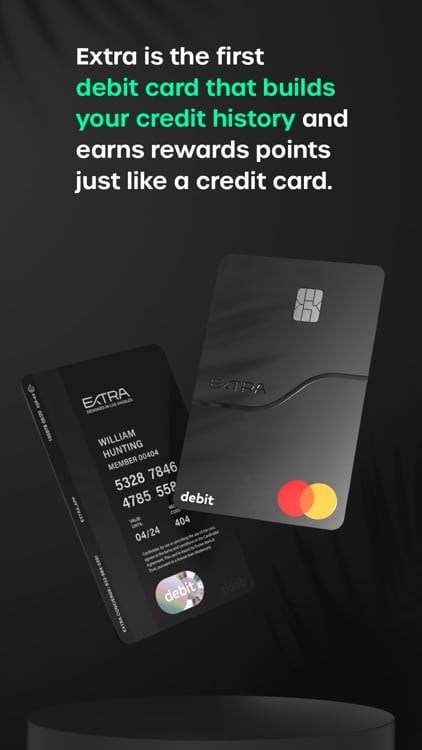
Extra is a prepaid debit card. When you make purchases with the Extra card, Extra immediately reimburses themselves for the purchase using your connected bank account.
There is no credit check required and no interest rates. The only catch is a monthly subscription fee of $8 USD (or $12 USD for the premium card that also earns rewards).
Extra is definitely something to consider early on if you want to expedite your credit history quickly in your first year. While I do not think it would have nearly the impact of an aged tradeline, it is considerably cheaper. Extra also claims to report to the bureaus as an uncapped loan, which would be more impactful than something like a secured credit card.
Read more in our article detailing the ins and outs of Extra Credit.
Others
Aside from Extra, there are numerous other fintech companies providing a similar service to improve credit scores. These are summarized below.
| Summary | Credit Type | Reports to | Subscription Cost | Interest | Accepts ITIN | Accepts Canadian Mobile Number | |
|---|---|---|---|---|---|---|---|
| Extra | Debit mastercard and app, purchases are paid by your connected bank account. | Uncapped loan | Experian, Equifax | $8 / month | None | ✅ | ✅ |
| Grain | Digital credit card, credit determined by linked bank account. Only available on Apple store currently. | Line of credit | Experian, Equifax, TransUnion | $0 | 15% APR | N/A* | ✅ |
| Brigit | Brigit opens a $250 loan and you deposit it into a community bank account. The loan is paid from there each month. | Installment loan | Experian, Equifax, TransUnion | $10 / month | None | ❓ | ❓ |
| SeedFi | You choose an amount ($20, $40, $80) to pay every month, and this is structured as a loan payment to SeedFi. You receive the money back once you reach $500 in savings. | Installment loan | Experian, Equifax, TransUnion | $1 / month or FREE with referral | None | ✅ | ❌ |
| Self | Setup as a monthly payment of $25, $35, $48, or $150 for a fixed term of 24 months. | Installment loan | Experian, Equifax, TransUnion | $9 admin fee | 15.92% APR | ✅ | ✅ |
| Credit Strong | Installment loan with borrowed funds placed in interest earning savings account. Single fixed monthly payments. Large loan amounts, designed to ‘supercharge’ your credit score. | Installment loan | Experian, Equifax, TransUnion | $25 admin fee | Variety of plans with APR of 5.9% – 13% and total installment amount from $1,000 to $10,000 | ✅ | ✅ |
| Kikoff | Kikoff provides a $500 credit line with no fees, you activate the line by buying items from the Kikoff store. | Revolving credit line | Experian, Equifax | $0 | None | ❌ | ❌ |
| Varo Believe | Secured credit account, must have a Varo Bank account with $500 in deposits to be eligible. | Secured credit card | Experian, Equifax, TransUnion | $0 | None | ✅ | ❓ |
Of note, none of these services will run a hard credit check. Some may require a US phone number in order to sign up (eg. Kikoff). I did not go through the full application and funding process with Grain, Brigit, or Self.
I did go through setting up an installment loan with SeedFi and it was a very smooth process. I entered my ITIN in the SSN field, uploaded a passport photo and a selfie, and connected my TD checking account via Plaid. The $40 payment comes out automatically every two weeks, and I can already see the loan on my credit report.
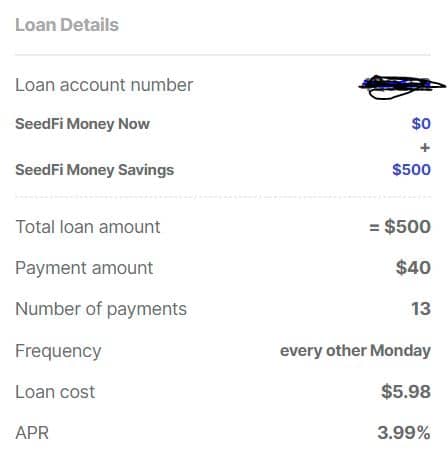
If you’d like to try SeedFi, use our link and you will save on the $1/month administrative fee.
Update (10/2023): I have also now used Credit Strong when helping set up a few friends and family with their US credit cards. The process was very straightforward, and worked with ITIN and Canadian phone number without any convoluted verification process.
Credit Builder Loans
Credit builder loans are very small loans that are usually secured by a cash deposit. You provide the deposit to the lender, and they loan you back the same amount so that on paper, you have a loan reporting to the credit agencies. In reality, the money is guaranteed for the lender, but this allows them to give you a near 0% interest rate.
It’s most common for credit unions to offer these types of loans, along with a few challenger fintech companies, such as Chime.
As with other methods discussed above, the biggest hurdle is often finding a lender who will accept ITIN instead of SSN. We’ve dug into a few of them below, but the number of possible lenders who offer this type of loan is endless.
| Loan | Interest Rate (APY) | Accepts ITIN | Requires In-person Appointment | |
|---|---|---|---|---|
| Affinity Credit Union | Kickstart Credit Loan | ❓ | ❓ | Yes |
| Alltru Credit Union | Credit Builder Loan | 12% | ✅ | ❓ |
| Express Credit Union | Credit Builder Loan | ❓ | ✅ | ❓ |
| Lending Circles | Group Loan | 0% | ✅ | Yes |
| US Alliance Financial | Credit Builder Loan | 12% | ✅ | No |
I personally applied to US Alliance Financial for credit builder loans and was pre-approved within 24 hours. I then had to provide a copy of my passport and ITIN letter. From there, a credit builder savings account was set up and the loan was funded.

PayPal Line of Credit
A few times when making PayPal purchases on my US PayPal account, I’ve noticed an offer for PayPal credit. This is a similar idea to Buy Now Pay Later, but functions as an actual reusable credit line.
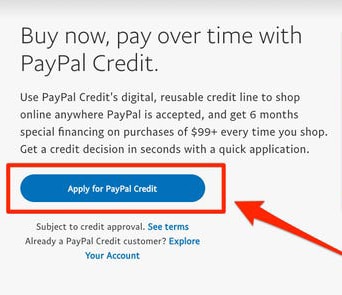
PayPal credit is subject to credit approval, and I can only assume that balances are reported to the credit bureaus. I have no first-hand experience, but if you see a pre-approved offer it might not hurt to give it a try and add it to your credit account mix.
Let us know in the comments if you have any experience with PayPal credit!
Buy Now Pay Later
We’ve previously written about Buy Now Pay Later, a new payment scheme offered on many eCommerce checkouts. Some of these BNPL providers also offer credit-building services by reporting your payments to the bureaus. For example, Sezzle has Sezzle Up, which reports your payments to TransUnion and Equifax.
Signing up for Sezzle Up as a Canadian is a bit tricky. You’ll need a US phone number in order to set your billing country to the US. I was able to do this using my Google Fi number.
From there, you can link a bank account or credit card, which will be charged when you make purchases using Sezzle (25% installments).
There is no hard credit check for Sezzle or Sezzle Up. In fact there is really no downside to using it, as long as your linked bank/credit card aren’t declined, you won’t ever be charged extra by Sezzle.
The main limitation of Sezzle is that it can only be used at partner stores, which at present are mostly boutique and niche retail stores. Target and Bass Pro Shops are the only large chains I recognized.
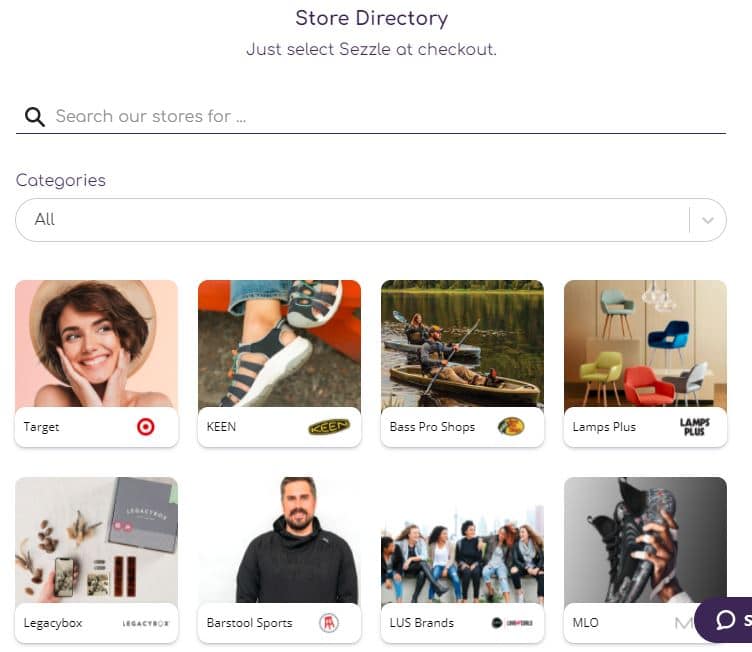
Finmasters has a comprehensive review of Sezzle Up if you’re interested to learn more.
Conclusion
If you’ve just ventured into the US credit card game, don’t get discouraged or feel that you’re starting from scratch in terms of credit history. Most new Canada-to-US miles and points enthusiasts simply accept the reality that they won’t be able to ramp up their card application rate to what they’re used to in Canada for years (or god forbid, even manage to get their first Chase credit card).
We feel that being aggressive in establishing your credit profile as best you can as early as you can is a superior and overlooked strategy. Follow what we’ve discussed above. Get multiple personal cards as fast as possible, even if it means also signing up for a secured card.
If you can afford it, pay a bit extra to add another account type, be it a credit builder loan, or Extra. And if you really want to pay to play, consider buying an aged tradeline. Combining these tips can get you on your way to a good credit score in minimal time.
We’d love to hear the experiences of any of our readers venturing into the US credit card game. How long did it take you to get additional credit cards in the United States? Have you used any of the above providers? Are you aware of any other ways to build credit history not mentioned here? Let us know in the comments!
Reed Sutton
Latest posts by Reed Sutton (see all)
- Edmonton Miles & Pints Meetup August 2024 - Jul 25, 2024
- Review: The Singapore EDITION - Jul 20, 2024
- Review: Conrad Singapore Orchard - Jul 17, 2024
- Welcome to the Frugal Flyer Team, Kirin! - Jun 30, 2024
- Review: Singapore Airlines Business Class (A350-900) - Jun 21, 2024
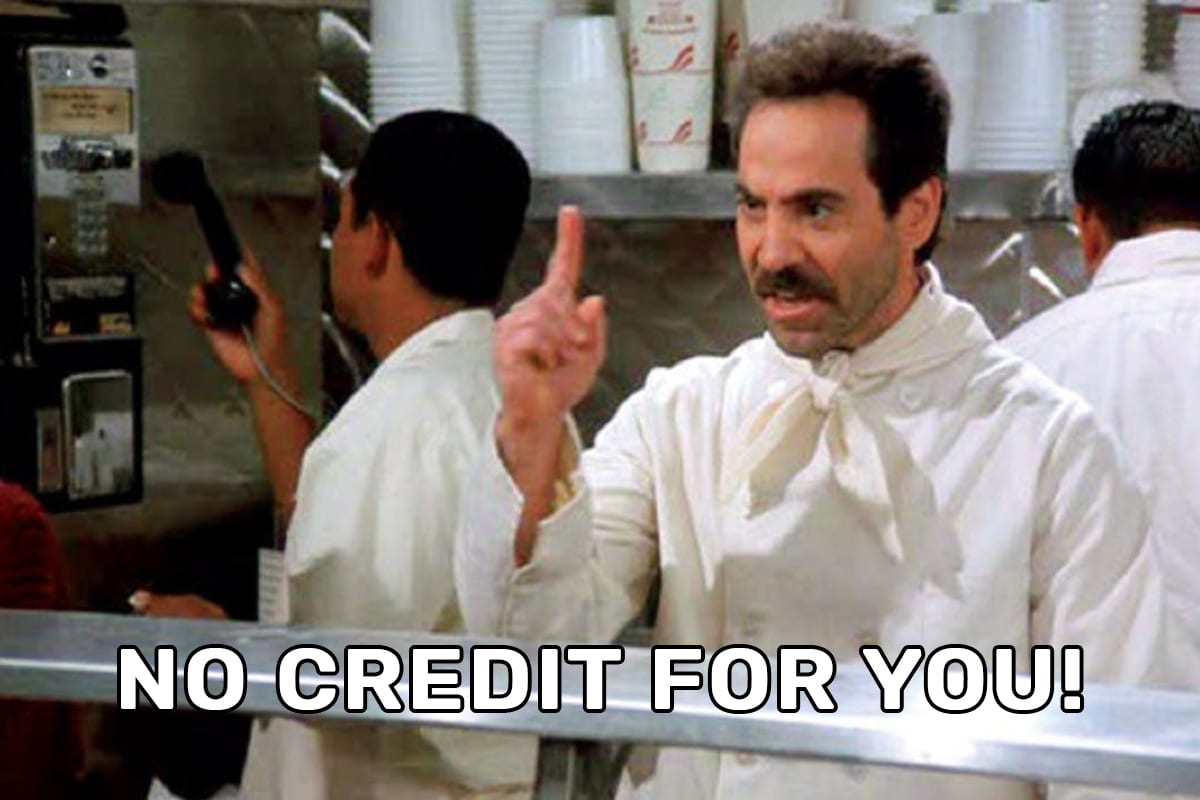
Hi Reed,
Running into some issues trying to view my credit score.
Kept getting the error message with the Amex built in link, even after 6 months. Finally called today and they said they their service now requires a SSN after a migration that happened in October.
Tried credit.com and the next button blanks out and wont let me proceed every time I enter my ITIN.
For MyEquifax I got a “We can’t complete your request at this time.” message and they are saying I have to mail in my 1099 and W2 to their office in order to open the account.
Is any of this normal?
Thanks,
Looks like SeedFi was acquired by Credit Karma under name Credit Builder.
I have about 6 months of credit history in the US with two Amex cards that I got through Nova Credit. Most recently I got rejected for both a Chase card and the Amex Gold.
All my attempts to open a credit builder loan have failed as they all require a US government issued ID which I do not have. I do have the ITIN and proof of address in the US through a cell phone plan. Brigit does only requires a bank account but your pay has to be going into the account for you to qualify. Not sure if anyone has been able to open a credit builder loan account without a US Government issued ID recently. Kindly share if you have
I was able to get SeedFi to work. Others have reported success with Self and Varo Believe.
Hi – everyone. I’m the David referenced in some of the older threads below. I started my US credit card journey just over a year ago. I have a BMO issued Mastercard with $8K limit (I leveraged BMO cross border banking to get this with no ITIN), an Amex Hilton Surpass via Nova Credit (initially $5K limit but auto increased to $8K limit after 8 months or so) and a Self $48 month instalment loan (this was the only alternative loan I could get working from the list above). I got an ITIN which I think I used for the self loan. I was able to get access to myEquifax out of the gate where I saw my two cards and it showed a credit score of 75O. Getting my self loan actually dropped my credit score to 690 but it recovered after a few months and it sits at 750 now and doesn’t seem to move. I tried to apply for the Amex gold after 3 and 9 months but was asked for a 4506 and/or was told my credit history wasn’t strong enough. Post one year out a few weeks ago I applied for the Amex Hilton Aspire and was approved without problem but with only a $3100 credit limit (huh?) Now I will try my hand at Chase products to top out my 5/24. I think I will also give Amex business products a shot after a few more months.
Hello Reed,
I am interested in taking out the US Alliance Financial credit builder loan. (I just received my ITIN and i am an Australian citizen)
I just want to ask if they prompt you to open their savings or checking account once you got approved for their credit builder loan ? Do you know if you can use another bank account to pay for your loan ? And how was your experience with US Alliance Financial ?
Thank you for your time.
Hi Marcus,
Never had to open a savings or checking, however others have since stated they had issues getting past verification with just passport at both SeedFi and US Alliance, both of which worked for me. Apparently Self is also good if those two don’t work for you either.
Cheers,
Reed
For US credit building, any experiences with something called Varo? Varo Believe, to be precise. Looks like the real McCoy, some good reviews.
Their info site asks for a SSN but the fine print says they accept ITIN too.
Never tried that one myself but looks promising, I will check it out! Thanks Osvald.
I have two personal US Amex’s for six months that I signed up for through Novacredit. I rec’d my ITIN this month.
I tried applying for the Amex Business Gold with ITIN and also the personal Marriott Bonvoy card with ITIN, but both separately. Amex rejected the gold as they said they can’t find credit profile with Transunion. Bonvoy asked for form 4506 so basically both will get rejected.
Will my credit score built up with six months of history with Amex on the two cards I have, start showing up automatically at some point with the three bureau’s? Should I try applying for Chase or Citi cards? I did open up a chase savings account last week when I was in the US.
Did you sign up for credit monitoring services mentioned in the article, and if so what do they show?
Also definitely if you’re in the US again I’d recommend applying for Chase card in branch. Approval is a lot smoother in branch.
I tried to sign up for credit.com today but it stops me at the point where I have to enter in the SSN field, as its not accepting my ITIN.
I also tried to obtain it through My Equifax online, but it didn’t spit one out and asked me to call the toll-free number which I did, and they said to mail in my ITIN, and ID to see if I can get one.
Next time in the USA, I will try applying for a Chase card in person.
Alas, Credit Strong and Self will not accept a Canadian passport. Requires a US-issued doc, a driver’s licence or state ID card or Green card
Yeah I was thinking of taking a stab at Chase app for the hell of it. Thanks for your insight.
Just to follow up on Reed’s comment, I definitely agree with trying for Chase or Citi. Interestingly enough, I am coming up on three years of US credit history and have yet to be approved for Chase (haven’t tried in recent months) but have already held one Citi card.
“Most of the experts recommend playing the Amex game in your first year while trying to stay well under the infamous Chase 5/24 rule. Then when you’ve got a year of history under your belt you might start applying for Chase cards.”
Do you mean a year of US Amex history period, even without an ITIN? I’m told before you can even apply for non-Amex cards you need an Amex *with your ITIN attached to it* for a minimum of six months. So for example, I had (and still have) three Amex before getting my ITIN earlier this year. I got my first, a personal card, in Feb 2019, so over two years ago.
I’m told my next step is to get another Amex where I can include my ITIN in the application. Problem is I’ve been in pop-up jail for months now (just tried again last night) so who knows when this’ll happen. 🙁
On that note, maybe you could also write about pop-up jail?
We definitely plan to write about the pop-up soon! I’ve had it a few times myself as has Josh.
Regarding Amex ITIN – I am not so sure the “attaching an ITIN” is a real thing. All your cards are visible by the bureaus whether you signed up for them with an ITIN or not. If you’re in pop-up jail anyways, I’d probably just apply to Chase or Citi in the meantime if I were in your shoes.
Attaching ITIN works at Amex
Can you elaborate? Ie. you had a card not showing on your credit profile and what you did to resolve it?
You need to consistently spend a few hundred dollars a month on your card to get out of pop up jail.
Tried to access FICO site through Amex – it failed to navigate to the report. Tried to sign for MyEquifax and credit.com and it failed immediately after me entering ITIN.
It required a phone call to MyEquifax and they said that they can see my credit report, but the identification required me sending them copy of my ITIN letter, and Canadian passport and drivers license by mail. However they said that it is still not guaranteed, that they will provide the access, as they want US documents.
Looks like the rules are getting tightened.
Hi Mike,
How old is your credit history?
All three of these are still working on my end and I signed up for MyEquifax quite recently.
I opened RBC US Visa Black in January, and got an AmEx Hilton a month ago (although the Nova Credit road did not work – it took a week of back and forth calls with customer service).
Minimum six months of history before you’ll start to see a score on Amex is typical.
Thanks! Otherwise I already started worrying. I was trying to understand if my RBC Visa Black was reported to the bureau properly.
I placed an order for a tradeline through Tradeline Supply. They won’t process it without an SSN – to the point they want you to send a photo. ITIN not accepted 🙁
Thanks David. That is unfortunate. I’ve added a note to the article.
We might look into doing tradelines in the future as a small side service.
Please do
By July 2024, can you share new data points on what works for folks with ITIN & a Canadian Passport? Second question is, can we start using any of these credit building services without a US Amex card if the end goal is to target a non-US card? Or is it recommended to have a 6 month history with US Amex irrespective of using these services? And last question, any update on FF’s tradeline service?
Hey Mo,
Still one of:
I would recommend getting a personal credit card as soon as possible to build credit. The credit building services help diversify your credit but it may not be enough on their own to get approved for more stringent issuers like Chase, Capital One, Citi, etc.
No update on tradelines, something we’ve thought about but on the backburner for now!
Regards,
Reed
Hi – I tried SeedFi with my ITIN. All good and even uploaded my Canadian Passport and took a selfi. Now I have a message that they need US passport or US drivers licence for this to work. Did something change?
Also my ITIN letter has my Canadian address on it. Does this present an issue?
No this is fine.
Hi David. It’s possible or it could be YMMV – I definitely signed up with Canadian passport, ITIN and US address, and was only asked to link US bank via Plaid…
After multiple tries and calls couldn’t get past the passport issue with Seedfi. Same with US Alliance Financial. But I did have luck with Self so I have $48 per month payment for 12 months and will be paid out to my existing back account/or mailed cheque at the end. And the cost is not that much.
Thanks David good datapoint! Perhaps I just got lucky with SeedFi. I have Extra as well and the process was pretty smooth.
Self asked me for for either a US driver’s licence or a state ID card. I had none.
If Self approved you, presumably you had some US card – or did it work just with a Canadian passport?
Thanks a lot
Just seeing this now – sorry. You can see my full journey at top of thread. At Self, I had to manually send in a picture of my Canadian Passport and a copy of my BMO credit card statement with my US address on it as my “utility bill” (important it can’t be printed from the web – it has to be the mailed physical copy) and that seemed to work. Could be a YMMV situation though.